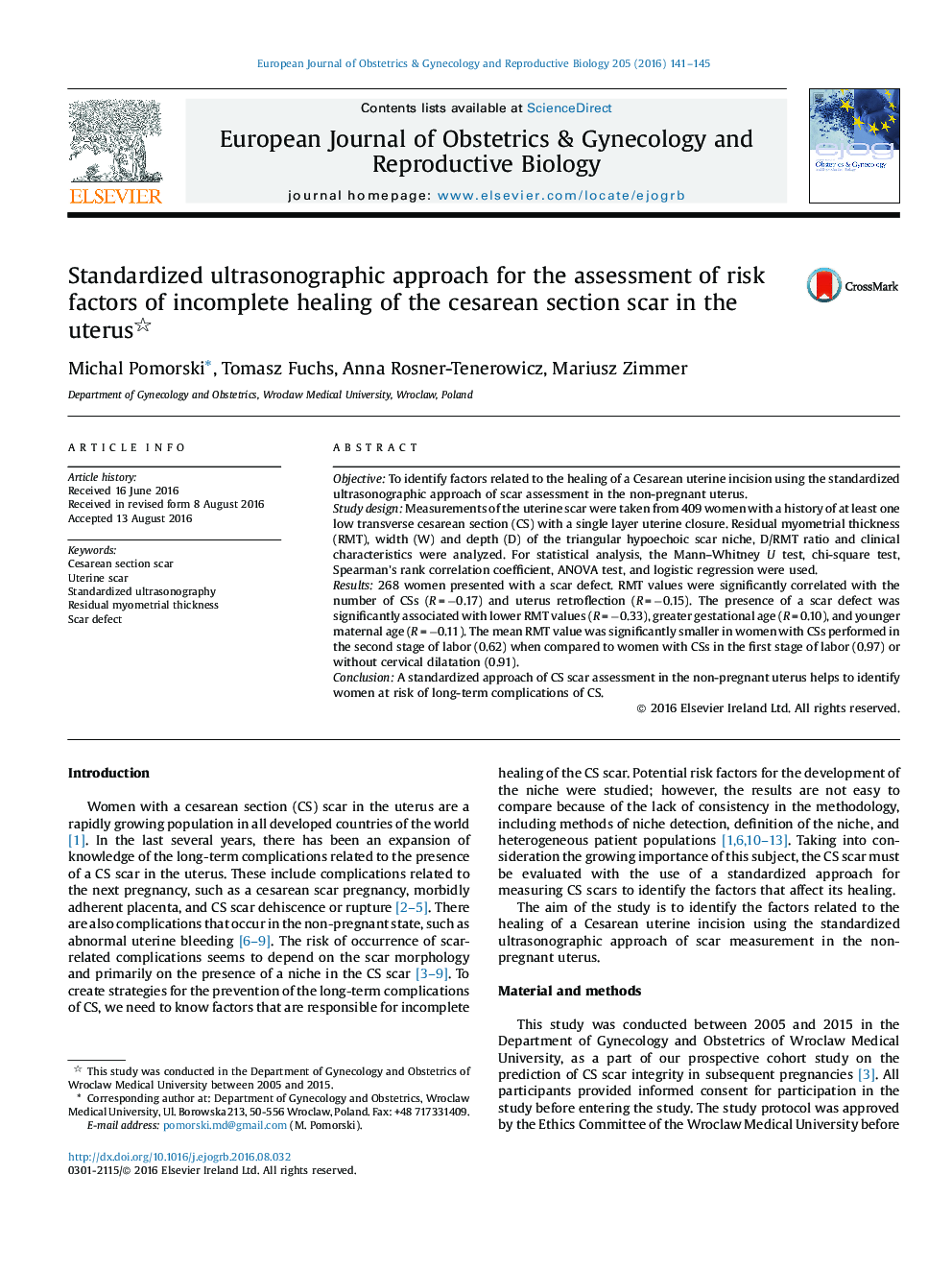| Article ID | Journal | Published Year | Pages | File Type |
|---|---|---|---|---|
| 3919302 | European Journal of Obstetrics & Gynecology and Reproductive Biology | 2016 | 5 Pages |
ObjectiveTo identify factors related to the healing of a Cesarean uterine incision using the standardized ultrasonographic approach of scar assessment in the non-pregnant uterus.Study designMeasurements of the uterine scar were taken from 409 women with a history of at least one low transverse cesarean section (CS) with a single layer uterine closure. Residual myometrial thickness (RMT), width (W) and depth (D) of the triangular hypoechoic scar niche, D/RMT ratio and clinical characteristics were analyzed. For statistical analysis, the Mann–Whitney U test, chi-square test, Spearman's rank correlation coefficient, ANOVA test, and logistic regression were used.Results268 women presented with a scar defect. RMT values were significantly correlated with the number of CSs (R = −0.17) and uterus retroflection (R = −0.15). The presence of a scar defect was significantly associated with lower RMT values (R = −0.33), greater gestational age (R = 0.10), and younger maternal age (R = −0.11). The mean RMT value was significantly smaller in women with CSs performed in the second stage of labor (0.62) when compared to women with CSs in the first stage of labor (0.97) or without cervical dilatation (0.91).ConclusionA standardized approach of CS scar assessment in the non-pregnant uterus helps to identify women at risk of long-term complications of CS.
